7 Easy Plants To Grow Inside Your House
-
- Last updated:
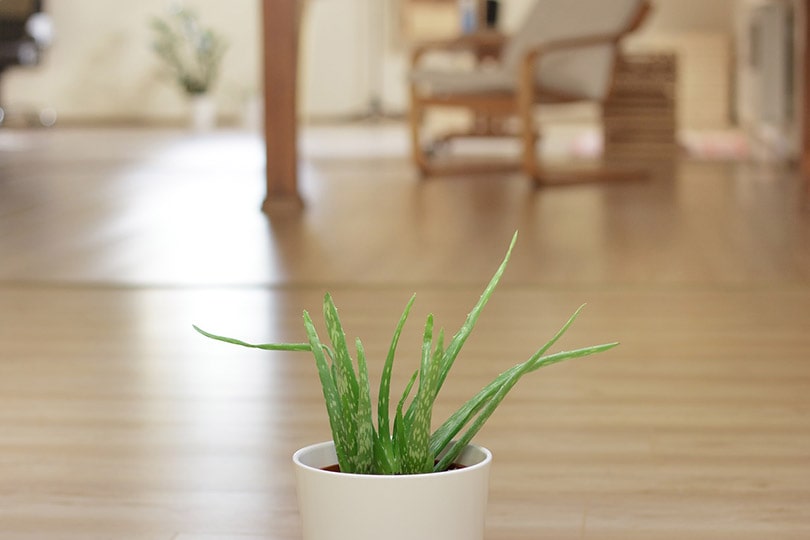
Research experts from all over the world have proven that growing plants indoors is beneficial in more ways than one.
Their findings have been applied to people from all walks of life, situations, and environments, and the outcome has always been the same—indoor plants have the ability to help you recover faster from illness, they’ll boost your productivity, increase your attention span, and indirectly reduce your stress levels.
Growing plants indoors wasn’t quite as common back in the day as it is now. If you’ve been shopping around for the perfect plant for your indoor setup, you’re in the right place. And the best thing is, these plants won’t ask for a fancy balcony or even a terrace!

The 7 Easy Plants You Can Grow Inside The House
1. Weeping Fig

| Temperature Range: | 65–85 Degrees F |
| Origin: | Northern Australia, India |
| Height: | 10ft max |
The weeping fig is scientifically known as ‘Ficus Benjamina.’ Genetically, it’s related to the breadfruit, the osage orange, and the mulberry tree. The height of the tree will depend on the climate of the region it’s in. If you go to South Asia, or anywhere considered a tropical region, you’ll get to find a gigantic specimen. It will even develop aerial roots, and this is something we don’t get to see quite often if the climate is characteristically dry.
As an indoor plant, it’s weirdly different—it doesn’t grow as tall as it normally does out there in the wild. Also, it hates sudden temperature changes and loves consistency. By that we mean, if you keep moving it around the house it will eventually wither and die. Once in a while is okay, but not all the time.
We love how exotic it always looks, and often blends well with any décor.
- Grows into a smaller plant indoors
- Looks exotic
- Complements the decor
- Doesn’t do well with temperature fluctuations
2. Snake Plant
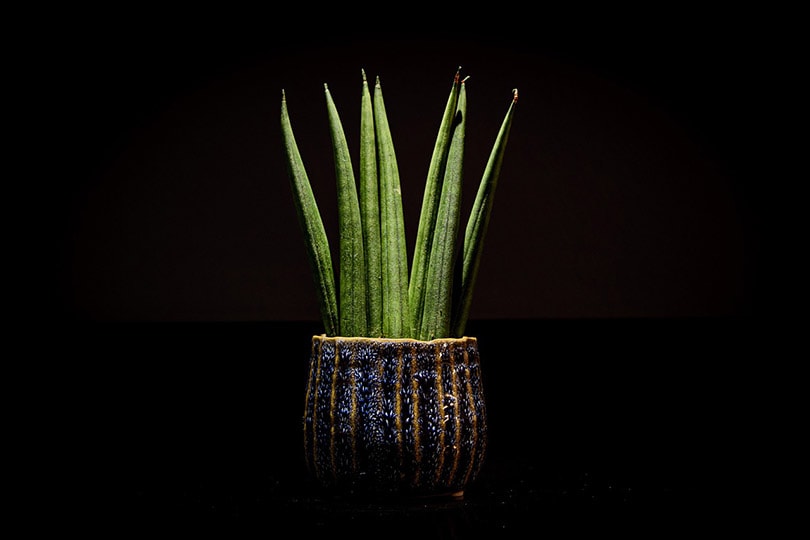
| Temperature Range: | 70–90 Degrees F |
| Origin: | Tropical Western Africa |
| Height: | 8ft max |
We’ll bet you’ve already seen a snake plant before. It’s the most common indoor plant in most homes and has leaves that are solid green in color and sword-shaped. From afar, you’ll think it’s artificial foliage. But we promise you, it’s not. It’s just an ordinary plant with the ability to complement your home décor beautifully.
Oh, and one more thing: botanists love to refer to the snake plant as the “Mother-in-Law’s Tongue”, the “St. George’s Sword,” or the “Viper’s Bowstring Hemp.”
The tongue and the sword moniker are in reference to the shape and sharp margins of its leaves, while the bowstring one was adopted after people realized its fibers could be used to produce durable bowstrings.
The point is, the snake plant is a great indoor plant with several benefits. It’s easy to maintain, will efficiently filter indoor air, boost your mental health, and help you fight allergies. But try to keep it away from kids or toddlers because those leaves are toxic. Even though its poison isn’t severe, it’s strong enough to make the tongue swell and go numb for a while.
- Easy to maintain
- Filters the air efficiently
- Has the ability to fight allergies
- Boosts mental health
- Mildly poisonous
3. Azalea
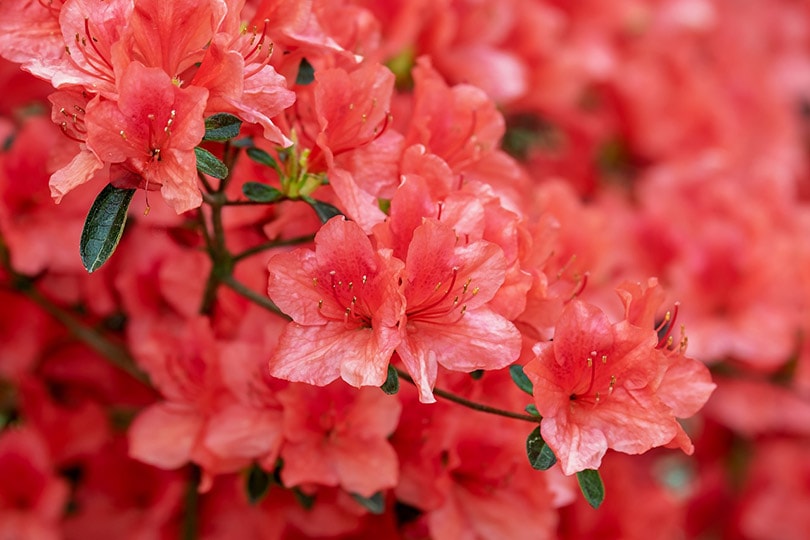
| Temperature Range: | 55–60 Degrees F |
| Origin: | Japan |
| Height: | 20ft max |
The best time to spot an azalea plant is during winter. It’s always that colorful pink plant that makes your favorite grocery store look beautiful from the outside, when everything else looks dull and gloomy due to bad weather. In fact, this beauty is the main contributing factor to its popularity as an indoor plant.
But before you even think about growing it, you’ll first need to learn a few tricks here and there about how to take care of it. Otherwise, they won’t bloom the same way they do out there in the wild.
The first thing to do is to look for a subgenre of this species. That’s the Greenhouse Azalea.
Don’t go for the species that you keep on seeing everywhere, because that variety only thrives outdoors. If you bring it inside the house, it will look malnourished in a way.
Of course, there’s a downside to housing this plant. One, they’ll bring mealybugs and whiteflies into the house. Those pesky insects love dwelling under their leaves and are the reason why those leaves keep turning yellow—a clear indication that you’re housing an unhealthy plant.
Two, after they’ve flowered, re-blooming them will be next to impossible. And even if you succeed, you won’t get the original deal, if you know what we mean.
- Aesthetically pleasing
- Comfortably grows indoors
- Easy to maintain
- Difficult to re-bloom
- Attracts whiteflies and mealybugs
4. Spider Plant
| Temperature Range: | 70–90 Degrees F |
| Origin: | Tropical and Southern Africa |
| Height: | 3ft max |
One of the things that makes this particular species special is that it’s very easy to grow and can adapt to any environment. If we’re being honest, we can’t think of any problem that you’d encounter while housing a spider plant, apart from the brown tips usually caused by fluoride found in the water being used on them.
Scientifically called the Chlorophytum Comosum, and once the leaves are all grown, they’ll dangle down and make the mother plant look like a spider creeping around on its web.
Even though we don’t advocate for plant abuse, it’s important to take note of the fact that this species can tolerate anything you throw at it. That’s why we normally recommend it to newbies who still have a lot to learn about gardening or anyone who doesn’t quite have that green touch.
All you have to do to support their growth is to ensure the soil is well-drained, they get sufficient but indirect light, and are watered frequently. “Frequently” does not mean that you should make them soggy. You’ll only be facilitating root rot by doing that.
Generally, the spider plant is harmless. As long as you don’t eat the leaves, you’ll be good. They have chemical compounds that are strong enough to cause diarrhea and vomiting in not just humans, but also pets.
- Easy to grow
- Can adapt to any environment
- Ideal for new indoor plant enthusiasts
- Requires less water
- Poisonous leaves
5. Ladies’ Slipper Orchid
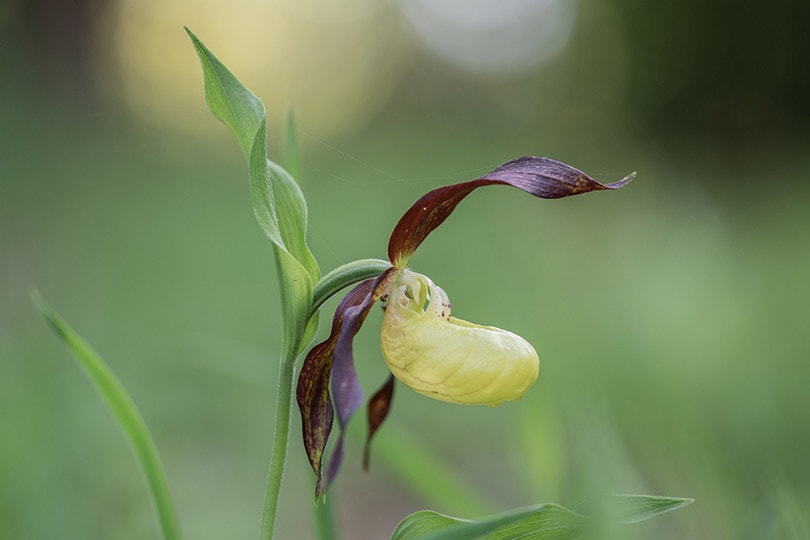
| Temperature Range: | 70–80 degrees F |
| Origin: | Oaxaca, Mexico |
| Height: | 2ft max |
If you prefer orchids, the lady’s slipper orchid is the plant for you. And the fun part is, you don’t have to only grow one subspecies, if you’re looking for variety there are around 60 different subspecies of the lady’s slipper orchid, and they can all comfortably thrive in hot climates or cool ones.
Why’s it called the lady’s slipper?
Well, that’s because their blossoms come with a pouch that sort of takes the shape of a lady’s slipper. Moreover, the pouches’ color is very different from that of the rest of the flower.
Pay close attention to the orchid’s leaf color while purchasing it, as it’s often used as an indicator of what the plant’s temperature preference is. All you have to remember is, mottled leaves mean warmer temperatures, and solid-green signifies cooler temperatures.
Speaking of preference, the lady’s slipper orchid doesn’t like dry air. So if you’re looking to keep it happy, log into your amazon account and buy one of those cool-mist room humidifiers.
- Can thrive in hot or cold climates
- Looks exotic
- Dislikes dry air
6. Italian Basil
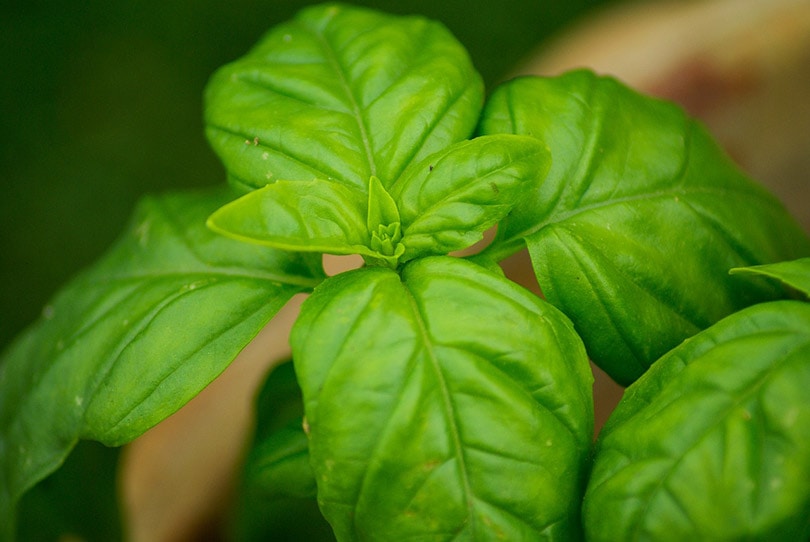
| Temperature Range: | 80–90 Degrees F |
| Origin: | Asia |
| Height: | 3ft max |
Basil doesn’t come from the Mediterranean, or Italy, as many assume. It’s actually an Asian native, but the reason why so many people associate it with other regions is because it is a staple food there.
If you need a plant that’s good at helping people feel more relaxed, calm, or productive, basil is the plant to go for.
Psychological experts believe people who tend to work next to plants that have leaves that are dark green in color usually have increased levels of positivity. And in turn, that positivity increases productivity.
The Italian basil loves the sun. So place it next to a window that allows in enough light every day, and it will thrive the same way it does outside. Alternatively, you could use a fluorescent bulb. Just make sure it’s 3–5 inches away and switched on for at least 12 hours a day.
Seeing as the plant doesn’t do well with cold, we wouldn’t recommend it to anyone living in cold climates. It will also need good drainage and airflow to prohibit the growth of bacteria.
- Edible
- Doesn’t require natural light to thrive
- Can boost productivity
- Not suitable for homeowners living in cold climates
Related Read: What Is Hydroponic Gardening? Are There Different Types?
7. Aloe Vera

| Temperature Range: | 55–80 degrees F |
| Origin: | The Arabian Peninsula |
| Height: | 3ft max |
Aloe vera was a must-have in almost every garden back in the day. Botanically, it’s known as Aloe Barbadensis, and it has innumerable commercial and medicinal benefits. For example, its antiseptic character has made it the go-to plant for people looking to get rid of bacteria and mold.
The plant’s leaves will branch out from the center, giving your space a tropical flair. But if you want it to stay healthy, you should position it next to a window where it will get sufficient sunlight and air. Also, if you’re an avid bird watcher, it will attract different birds looking to suck its nectar.
The only problem with aloe vera is, it’s very susceptible to root rot. So you need to be careful not to water it too much.
- Offers a tropical flair
- Has antiseptic properties
- Innumerable commercial and medical uses
- Will attract different birds
- Susceptible to root rot
Related Read:
- 15 Best Types of Vegetables to Grow Indoors Under Lights
- 8 Best Humidifiers for Plants
- STEP-BY-STEP GUIDE ON HOW TO MOVE HOUSEPLANTS INDOORS FOR THE WINTER (2023 GUIDE)

Final words
We would encourage you to go get one of these plants if you’re thinking of ways you could relax your mind, reduce your stress levels, or increase your productivity. Time and time again, science has proven that indoor plants play critical roles in not just your home, but your workspace as well.
See also: How to Grow Marigold Indoors — 12 Tips & Tricks
Featured Image Credit: Devanath, Pixabay
Contents

